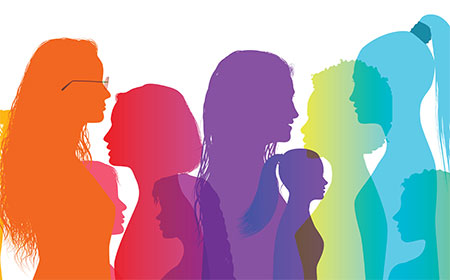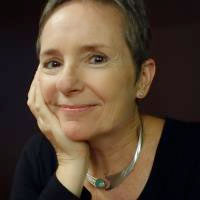Why we still need women’s groups to build tomorrow’s leaders
By Megan Carroll and Kelly Roberts
 Women in Lighting + Design, affectionately known as WILD, is a group that builds networking opportunities and inspires conversations about the state of inequity in the lighting industry. The group’s mission is to “provide an inclusive and open environment for professional and personal growth by offering community, mentorship and knowledge sharing.” When WILD began meeting in the ’90s, the bars-and-cigars mentality of wooing clients and making connections was not easily accessible for women, and the need for a unique community was clear. Women and their allies needed a comfortable place to discuss issues at the office and at construction sites, and to gather strength and support for those day-to-day fights. Over the last three decades WILD has grown from small random potlucks in homes and offices, to a connected group convening for discussions on professional growth, workplace sexism, financial health and parental planning, among other concerns. Chapters are located all over the country, including WILD in New York City; Ladies of Lighting in St. Louis, Denver and Philadelphia; and WILD West, with new interest and locations growing every day. Some meetings are “mixers” open to anyone interested in attending, with the goal of sharing, informing and creating awareness about whatever’s being talked about in the larger community, while some meetings are clearly tagged for women only, depending on the specific topic.
Women in Lighting + Design, affectionately known as WILD, is a group that builds networking opportunities and inspires conversations about the state of inequity in the lighting industry. The group’s mission is to “provide an inclusive and open environment for professional and personal growth by offering community, mentorship and knowledge sharing.” When WILD began meeting in the ’90s, the bars-and-cigars mentality of wooing clients and making connections was not easily accessible for women, and the need for a unique community was clear. Women and their allies needed a comfortable place to discuss issues at the office and at construction sites, and to gather strength and support for those day-to-day fights. Over the last three decades WILD has grown from small random potlucks in homes and offices, to a connected group convening for discussions on professional growth, workplace sexism, financial health and parental planning, among other concerns. Chapters are located all over the country, including WILD in New York City; Ladies of Lighting in St. Louis, Denver and Philadelphia; and WILD West, with new interest and locations growing every day. Some meetings are “mixers” open to anyone interested in attending, with the goal of sharing, informing and creating awareness about whatever’s being talked about in the larger community, while some meetings are clearly tagged for women only, depending on the specific topic.
WILD’s growth has brought about a new question: is a “women in lighting” community still needed? This question assumes that the growth and cultural changes we’re experiencing mean women have reached equal footing in the industry. This is growth women and the industry should be proud of, as it came from dedicated work both individually and as a community. There are also more women in lighting than ever before, leading companies and our networking organizations like the IES and the DLF. There are more women in our graduate programs than ever before, ready to jump into the industry and drive change. And yet, how many times are women offered the only pink construction helmet on a job site? How many times are male coworkers turned to first in a meeting, even though they are not the lead on the project? How many times have women been overlooked for a promotion because they have children at home and need more flexible hours? In the workplace, how often have you heard women referred to as “girls?”
These inequities may not even be apparent to the perpetrators. That’s because it’s easy for others to assume that if a problem is not visible to them, or does not affect them, it does not exist. However, WILD begins the conversations that allow members to share their challenges and discuss solutions. We are learning that different communities need different resources and support. WILD allows us to take the strength and lessons learned from each other and bring it with us into the workforce and into our lives. So the answer to the question—“Is a community for women still needed?”—is an emphatic yes.
We need a women in lighting and design community to disrupt the status quo and continue pushing forward—and events and initiatives across the country offer examples of how to do so. For instance, during last year’s LEDucation conference, women from various professions within the lighting community, including design, education, engineer-ing, marketing and sales, gathered at a WILD roundtable workshop to explore three significant issues they face every day. The topics—equal pay, family leave and leadership—drive to the core of Women in Lighting + Design’s push for change in the industry. Here are a few highlights from just one discussion titled “Building Leaders of Tomorrow.”
- Words. “Girls” vs. “women.” Girls are typically too young to be allowed in the workplace, yet when a young woman refers to herself as a girl or uses that word to describe a group of young women, is it acceptable because she used it or, in other words, it’s self-referential? The consensus was that it may still be damaging and, perhaps more importantly, that word choice must be considered carefully—regardless of the source.
- Boundaries. Claim them, establish them, make them known. Don’t offer an apology for thinking, for doing, for asking—the adages “just say no” and “just do it” apply.
- Mentoring. Ask for help. Find your coach and ask a person you admire for their counsel and to mentor you.
- Leadership. Establish authority. Don’t be a “Silent Sally”—step up and speak out, with respect to all.
- Community. The discussion and these changes have to take place with everyone, in every setting—work, life and school—because this issue impacts everyone, regardless of age, race or gender.
Today, with the plethora of social media options to connect, meet up and learn, some young women find it easy to “follow” a role model and virtually hone their leadership skills. That’s a wonderful new mode of networking and it serves a purpose. However, the value of having a real-life mentor—who can focus on your specific needs, who knows you personally, and who can provide genuine, objective insights, motivation and support in real time—is by far a richer, more meaningful and more memorable relationship. Mentors don’t necessarily need to be part of your daily workplace. They can be former colleagues, someone you met or heard speak at industry events, like WILD meetings, trade shows and conferences, or in another division if you happen to work for a large corporation—just ask. Make a career plan and establish clear needs with an end goal so together you can create a plan.
Women in Lighting + Design is connecting more and more women and their allies across the country every year. Through this community the industry learns about each other’s experiences and struggles. WILD provides the opportunity to turn each experience and success into building the success of others. Whether your women in lighting community is a few people, or many people, WILD has a place for you. We encourage members to reach out to each other, create connections, and empower one another to take the next steps in careers and lives. Together we can lead the industry forward—for when women succeed, everyone succeeds.
For more information about Women in Lighting + Design, to sign up for the WILD newsletter, or to learn how to connect with WILD on LinkedIn and Facebook, go to https://womeninlightingdesign.wordpress.com. Don’t see a chapter in your area? Consider reaching out to womeninlightingdesign@gmail.com to learn how to start one.


